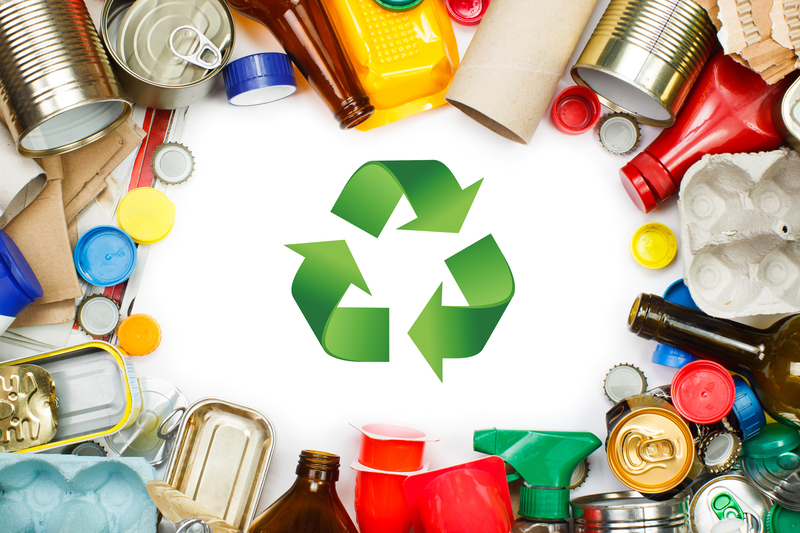In today's rapidly evolving world, finding sustainable solutions to mitigate our environmental impact is crucial. Transforming waste into renewable energy stands as one of the most promising methods to address waste management challenges while simultaneously generating clean energy. This article delves into the innovative uses of waste in renewable energy, exploring the diverse technologies and methods that are shaping a sustainable future.
The Problem of Waste and the Need for Renewable Energy
With the surge in global population and industrial activities, waste generation has reached unprecedented levels. Concurrently, the demand for energy continues to rise, putting immense pressure on natural resources and contributing to environmental degradation. Utilizing waste in renewable energy systems presents a dual opportunity: reducing the waste burden and supplying clean energy to meet our needs.

Transforming Waste into Renewable Energy
Several innovative technologies have emerged, enabling the transformation of various types of waste into renewable energy sources. Below, we explore some of these pioneering methods:
1. Anaerobic Digestion
Anaerobic digestion is a process where organic waste is broken down by microorganisms in the absence of oxygen. This method produces biogas, mainly composed of methane and carbon dioxide, which can be used to generate electricity, heat, or even fuel for vehicles.
- Organic Waste: Food scraps, manure, and agricultural residues are ideal for anaerobic digestion.
- Benefits: Not only does this process reduce waste, but it also decreases greenhouse gas emissions and enriches soil quality through the production of nutrient-rich digestate.
2. Gasification
Gasification is a technique that converts organic or fossil-based materials into syngas (synthetic gas) through a high-temperature reaction with a controlled amount of oxygen. This syngas can then be utilized for electricity generation, chemical production, or as fuel.
- Waste Sources: This process is applicable to a broad spectrum of waste materials, including municipal solid waste (MSW), industrial waste, and biomass.
- Advantage: Gasification reduces landfill use and provides a cleaner alternative to fossil fuels.
3. Thermal Depolymerization
Thermal depolymerization is a chemical process that mimics the natural geological processes thought to produce fossil fuels. By applying heat and pressure, this method breaks down complex organic materials into crude oil-like substances, which can be refined into fuels and chemicals.
- Applicable Waste: Plastic wastes, animal offal, and other organic residues can be transformed through this process.
Highlight: Thermal depolymerization not only offers a solution for pervasive plastic pollution but also presents an opportunity for fuel generation.
Utilizing Industrial Waste in Energy Production
While household and agricultural waste are predominantly used in renewable energy, industrial waste also plays a pivotal role. The following are some ways industrial waste is innovatively utilized for energy:
1. Waste Heat Recovery
Many industrial processes generate substantial amounts of waste heat, which is often discharged into the environment. However, waste heat recovery systems capture this thermal energy and convert it into electricity or reuse it within the industrial process itself.
- Industries Benefiting: Steel, cement, and chemical industries, among others, can significantly enhance energy efficiency through waste heat recovery.
- Sustainability Aspect: By reducing reliance on external energy sources, industries can lower their carbon footprint and operational costs.
2. Co-processing in Cement Kilns
Co-processing involves utilizing non-recyclable industrial waste as a fuel or raw material in industrial processes such as cement manufacturing. Cement kilns have the capability to safely incinerate hazardous wastes at high temperatures, thus preventing environmental contamination.
- Waste Utilized: Tyres, used oils, and sludge from wastewater treatment are common materials utilized.
- Benefit: Not only does this process conserve natural resources, but it also eliminates toxic waste and reduces emissions associated with waste disposal.
3. Biomass from Industrial By-products
Many sectors generate by-products that can be repurposed as biomass feedstock. These include timber industry residues, agricultural waste, and even algae cultivated in wastewater treatment plants.
- Outcome: Such biomass is burned to produce steam for electricity generation or transformed into biofuels.
Environmental Impact: Harnessing industrial by-product biomass contributes to energy sustainability and waste minimization.

The Future of Waste in Renewable Energy
As the demand for cleaner energy continues to grow, so does the innovation in waste-to-energy technologies. Here are some emerging trends and technologies that will likely shape the future:
1. Advancements in Biotechnology
Genetic engineering and microbial biotechnology are paving the way for more efficient waste conversion processes. Customized microorganisms developed through genetic engineering can break down waste more effectively and produce specific types of biofuels or chemicals.
2. Integration of Smart Technologies
The incorporation of IoT and AI into waste-to-energy systems is enabling more efficient operations. Smart sensors for real-time waste analysis, predictive maintenance for machinery, and AI-driven process optimization are some advancements enhancing energy yield from waste.
3. Policy and Financial Incentives
Governments around the globe are recognizing the potential of waste in renewable energy, implementing policies and financial incentives to boost investments in this sector. Subsidies for waste collection and processing, tax incentives for companies utilizing waste-to-energy technologies, and stricter regulations on landfill use are just a few initiatives driving growth.
Conclusion
Converting waste into renewable energy constitutes a win-win solution for two of the most pressing issues of our time: waste management and sustainable energy production. By leveraging innovative technologies and fostering supportive policies, we can harness the potential of waste to power our world while preserving the planet for future generations.
In closing, the transformative journey from waste to renewable energy not only builds a cleaner, more sustainable future but also holds the promise of reshaping our approach to resource utilization, showcasing a future where waste is not just an inconvenience but a valuable resource awaiting opportunities for renewal.